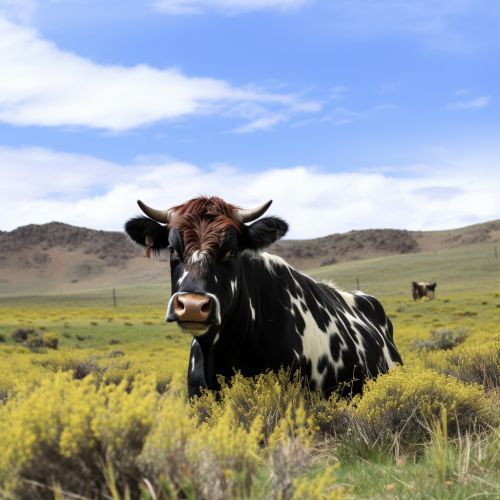Chiru
Overview
The Chiru, also known as the Tibetan Antelope (Pantholops hodgsonii), is a medium-sized bovid native to the Tibetan plateau. This species is noted for its unique adaptations to the harsh, high-altitude environment, including a specialized circulatory system and a dense, wool-like coat known as shahtoosh, which is highly prized in some cultures.


Description
Chirus are slender and agile creatures, with both males and females exhibiting a light brown to grey coat that blends well with their arid surroundings. Males are distinguished by their long, slender, black horns, which can reach up to 60 cm in length. These horns are used during the rutting season, where males engage in fierce battles for mating rights.
The Chiru's coat is made up of a unique type of wool known as shahtoosh. This wool is incredibly fine and warm, making it a highly sought-after commodity. However, the illegal trade in shahtoosh has led to a significant decline in Chiru populations, making them a species of concern for conservationists.
Habitat and Distribution
Chirus are endemic to the Tibetan plateau, a vast, high-altitude region that spans parts of China, India, and Nepal. This harsh environment is characterized by its cold temperatures, low oxygen levels, and sparse vegetation. Despite these challenging conditions, the Chiru has evolved a number of adaptations that allow it to thrive in this unique habitat.
Adaptations
One of the key adaptations of the Chiru is its specialized circulatory system. Living at altitudes of up to 5,500 meters, the Chiru has evolved a larger heart and lungs, as well as higher concentrations of hemoglobin in its blood, allowing it to efficiently oxygenate its body in the thin air of the Tibetan plateau.
The Chiru's dense, wool-like coat is another crucial adaptation. This coat provides excellent insulation against the freezing temperatures, and also serves to camouflage the Chiru against its rocky surroundings. The wool, known as shahtoosh, is considered to be the finest and warmest in the world, and has unfortunately made the Chiru a target for poachers.
Behavior and Ecology
Chirus are highly social animals, forming large herds that can number in the hundreds. These herds are typically segregated by sex, with males and females coming together only during the breeding season.
During the rutting season, male Chirus engage in fierce battles for dominance, using their long, slender horns as weapons. These battles can be brutal, with males often sustaining serious injuries.
Chirus are primarily grazers, feeding on a variety of grasses and other vegetation. Their diet is supplemented by lichens and other plant material during the harsh winter months.
Conservation Status
The Chiru is currently listed as Near Threatened on the IUCN Red List of Threatened Species. The primary threat to the Chiru is poaching for its valuable shahtoosh wool. Despite international efforts to curb the illegal trade in shahtoosh, demand remains high, particularly in the Middle East and Europe.
Conservation efforts are currently focused on protecting the Chiru's habitat and cracking down on the illegal trade in shahtoosh. These efforts have had some success, with Chiru populations showing signs of recovery in recent years.
